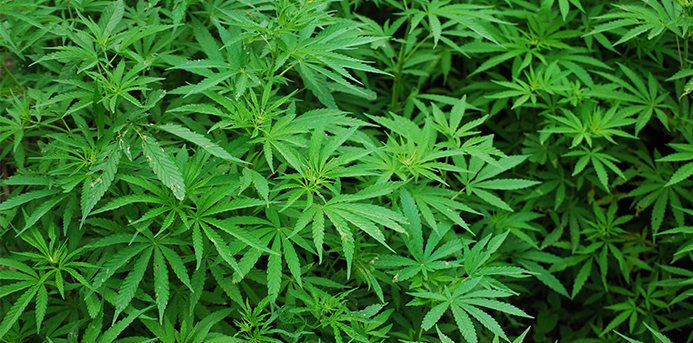Opinions about marijuana are changing. Greater social acceptance is evidenced by the drug’s legalization in some states, calls for decriminalization by politicians in others, and even Kathy Bates’ new television series “Disjointed,” about the owner of a Los Angeles cannabis dispensary. Marijuana is the most commonly used illicit drug in the United States by teens as well as adults, according to the National Institute on Drug Abuse for Teens (NIDA).
Raising a child in a time when marijuana is legal in some places means parents are in new territory. Many wonder how they should approach cannabis when it comes to their kids.
A majority of kids think that marijuana is safe or, at least, not dangerous. A study from NIDA found that 60 percent of high school seniors don’t view regular marijuana use as harmful, and many parents feel the same way, you can click here for more on that. It’s also important to note that CBD oil as a treatment has has taken hold, more on the common side effects users experience after taking CBD oil later.
That’s a big misconception.
Pot and the adolescent brain and body
Marijuana impacts kids in a very different way than it does adults. The adolescent brain is not fully formed — and isn’t until one’s mid 20s. Exposing the developing brain to marijuana can have a detrimental effect. A paper published in Frontiers in Psychiatry reviewed numerous studies and determined that regular marijuana use, meaning once per week or more, can alter the structure of the teenage brain. The studies examined in the paper and by NIDA show that regular use specifically impacts the areas of the brain responsible for memory, concentration, decision making, and problem solving, and earlier use is associated with more severe cognitive consequences. A report by the American Academy of Pediatrics (AAP) warns that some of the changes may be permanent. That’s one of the reasons the AAP opposes marijuana use by anyone under age 21.
Use of marijuana can also increase the risk of psychotic disorders, according to a paper published earlier this April in the journal Biological Psychiatry. The authors note that while researchers continue to explore the connection, “evidence from epidemiologic studies provides strong enough evidence to warrant a public health message” about that possible impact upon mental health. Specifically, in adolescents, marijuana use has been linked with depression and anxiety, as well as suicidal thoughts.
“Kids and parents need to know that marijuana impairs short-term memory, learning, [and] ability to focus. Who would want to rob themselves of any potential in terms of brain development?” says Dr. Laura Parise, a psychiatrist specializing in the treatment of substance abuse at NorthShore University HealthSystem.
“Introducing drugs during the period of brain development may cause changes that have profound and lasting consequences. It’s not ‘stop using and it goes away,’” Parise says.
NIDA notes other physical effects such as increased heart rate and respiratory changes, and while those “may seem harmless, they can take a toll on the body.”
In teens, marijuana has also been linked to poor academic performance, including lower grades and lower odds of completing high school or obtaining a college degree, according to the AAP. They also note a link to a higher likelihood of drug dependence in adulthood.
Parise notes that the perception of risk surrounding marijuana use has declined and that parents have a responsibility to minimize confusion about acceptability of use for their kids, which they can do by talking with kids starting at an early age. “Make it part of your family fabric to talk about this,” urges Karen Jarczyk, prevention director at 360 Youth Services.
Legal issues and gummy bears
In addition to discussing the impact of the drug itself, families should also address the different forms in which it is available, some of which may be new to both kids and parents. In Naperville, Illinois, and La Porte County, Indiana, earlier this year, teens ingested what turned out to be homemade gummy bears laced with THC, which is also found in marijuana. In both incidents, more than 10 kids were taken to the hospital.
“Parents can’t take these things lightly,” says Commander Louis Cammiso of the Naperville Police Department. He notes that while the possession of less than 10 grams of cannabis has been decriminalized by statute, it still isn’t legal in the state. “It may not be a criminal offense, but it’s still an offense and a citation can be issued,” Cammiso says. He also notes that the statue does not address teenagers, meaning that it is unlawful for them to possess marijuana in the state. In addition to consequences in the justice system, Cammiso encourages parents to discuss the possible consequences at school and with extracurricular activities.
“There is a difference between something being legal and being healthy,” Jarczyk says.
Dangers of driving
Teens are likely familiar with the message that drinking and driving don’t mix, but they also need to know that driving while high is very dangerous, too. High school seniors who smoke marijuana are two times more likely to receive a traffic ticket and 65 percent more likely to get into an accident than those who don’t smoke, says NIDA.
In Colorado, 21 percent of high school students said they were marijuana users and 45 percent of them reported driving after using marijuana, according to the 2015 Healthy Kids Colorado Survey. In contrast, around 13 percent of adults identified as marijuana users and 17 percent said they drove after use, according to the Colorado Department of Public Health and Environment.
Colorado launched the Drive High, Get a DUI campaign to lower those numbers. It targets teens with billboards that have phrases such as “Hits lead to hits.” Most states, however, don’t have such a campaign.
“Significant progress has been made in reducing alcohol-impaired driving among youth. Since 1982, the number of alcohol-related fatalities for those under the age of 21 has decreased by 80 percent, but drug-impaired driving is another story,” says Erin Holmes, director of traffic safety at Responsibility.org. “To date, there have been very few drug-impaired driving prevention campaigns that are tailored to a youth audience,” she explains, noting that some kids are unaware of the risks of driving while high.
Holmes says there is “a clear need to develop education programs and awareness campaigns. The absence of these initiatives misses an opportunity to target youth for prevention efforts and to reduce the drugged driving problem among this high-risk segment of the population.” Parents, however, can help their children understand the dangers of doing drugs, particularly marijuana, and driving.
What can parents do?
- Build a solid relationship with your child. “First things first. With our kids, first we need a good relationship so we are able to have the conversations,” Parise says.
- Make sure parents and key adults in the child’s life are on the same page and sending consistent messages about marijuana use.
- Be informed about the impact of marijuana on the adolescent brain and educate your child about the impact.
- Teach kids media literacy and encourage them to think critically about the portrayal of marijuana, suggests Jarczyk.
- Parise advises that parents need to have “many 60-second conversations, not one big long talk” with their kids about not abusing substances.
- Remind kids to not ingest something edible unless they know what is in it and that just because something (like a gummy bear) looks safe doesn’t mean that it is.
- Encourage kids to do their own research. If they have questions about medical marijuana, suggest that you both do some reading on the topic and then share what you’ve learned with each other.
- Pay special attention during times of transition, such as a move, divorce, or starting a new school. Parise says drug use generally increases during those periods.
- Get help and support if you know your teen is using marijuana. “No one ever says, ‘I got help too soon,’” Jarczyk says.
- Focus on the positive — when kids know that three-quarters of their peers are not getting high, they don’t feel alone when they choose not to do it and it takes away a bit of the curiosity.

Shannan Younger is a writer living in the western suburbs of Chicago with her husband and teen daughter. Originally from Ohio, she received her undergraduate and law degrees from the University of Notre Dame. Her essays have been published in several anthologies and her work has been featured on a wide range of websites, from the Erma Bombeck Humor Writers Workshopto the BBC. She also blogs about parenting at Between Us Parents.
Shannan is the Illinois Champion Leader for Shot@Life, a campaign of the United Nations Foundation that supports vaccination efforts in developing countries to ensure life-saving vaccines reach the hardest to reach children. “Vaccines are one of the most effective ways to save the lives of children in developing countries and I’d love nothing more than to see diseases eradicated,” Shannan says. “We are so close to getting rid of polio for good!”

